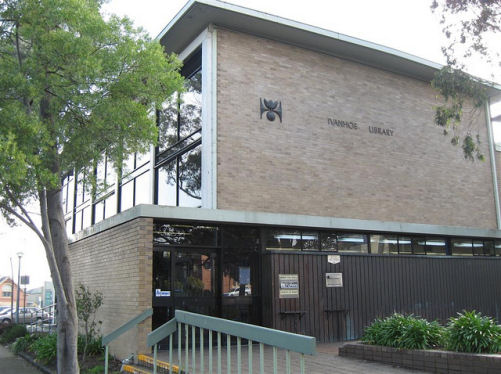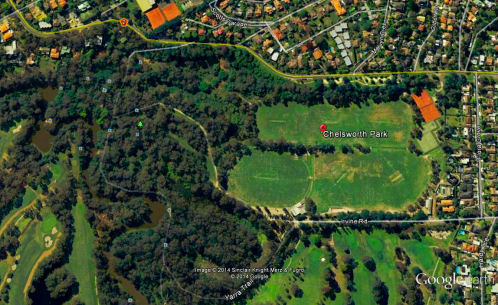MAJOR TRANSPORT PROJECTS FACILITATION AMENDMENT (EAST WEST
LINK AND OTHER PROJECTS) BILL 2013
Second reading
Mr MULDER (Minister for Public Transport)
-- I move:
- That this bill be now read a second time.
Transport context
Victoria is growing and changing. The demand for travel and the need to
efficiently move people and goods is growing every day.
The coalition government is committed to delivering major transport
infrastructure projects. They are essential to our economic future and our
livability.
Congestion on roads and on public transport hurts our economy and affects all of
our day-to-day lives.
The government is taking decisive action to cut red tape to allow for the
assessment and delivery of major transport projects more quickly and
efficiently.
Legislation has a key part to play in cutting red tape to address the
infrastructure backlog. This is central to transforming our transport system.
Put simply, this bill will deliver much needed infrastructure sooner, and at a
lower cost.
The coalition did not oppose the Major Transport Projects Facilitation Act when
it was introduced into this house in 2009.
There are, however, a range of improvements that need to be made to the scheme
to cut red tape and boost productivity for the assessment, and delivery of
declared projects.
The benefits to major transport projects
The east-west road link, the Melbourne Metro rail tunnel and the port of
Hastings are transformative projects. The quicker they are delivered, the
quicker Victorians and Victorian businesses will see the benefits.
The east-west road link is a city-shaping project for Victoria. The new
18-kilometre cross-city freeway-standard link will provide an alternative to the
Page 2164
M1 corridor, alleviate chronic congestion and improve travel time for motorists
and allow freight to be moved around more quickly. The government has committed
to fund stage 1 of this project, which has an estimated capital cost of between
$6 billion and $8 billion.
The Melbourne Metro rail tunnel will untangle the rail network and unlock the
capacity needed to expand the network and increase services to Melbourne's
growth areas in the north, west and south-east. Creating capacity, particularly
in the city loop, also means that more trains can run on all the lines, not just
those running through the new tunnel. In 2012, the government made the first
state contribution to the project, allocating $49.7 million.
Subject to the Premier's approval the legislation will also enable the port of
Hastings development to be delivered.
This project is essential for Victoria's future and the government has provided
$110 million in the budget to kick-start the development.
This act, with the substantial improvements before you, is the foundation on
which these crucial projects can be delivered.
It would also be a mistake to think that the bill is only for
multibillion-dollar projects. It is not just about capital expenditure, it is
about the value to the community that new and upgraded parts of the transport
network can bring. Cycling networks, for example, face the same barriers as
other linear projects in road and rail and the issues associated with getting
projects delivered.
This legislation provides an alternative to the environment effects statement
process and the multiple approvals required to deliver state-significant
projects.
Delivering major transport projects is a very costly exercise. This bill is
designed to cut down on bureaucracy and channel state funds to where it can
deliver the most benefit -- the transport infrastructure on which we all rely.
Policy context
The changes before the house are a cornerstone of the government's budget
commitment to deliver better value in infrastructure planning and delivery.
As the budget papers state:
- The government is driving better value for money, streamlining project
approvals and cutting red tape to expedite major projects coming to market.
The government is continuing to implement rigorous processes to improve
infrastructure project delivery and ensure the cost pressures that affected
major projects in the past are not repeated.
This is precisely what this bill is designed to do.
In December last year the government released its economic statement, 'Securing
Victoria's Economy -- Planning, Building, Delivering'.
The strategy outlines the government's vision for public sector reform involving
controlling costs, reducing internal red tape and improving management within
the public sector.
This bill exemplifies this government's commitment to work harder and to work
smarter to cut red tape so the benefits of major transport projects can be
delivered sooner.
The bill
Part 1 of the bill deals with preliminary matters.
Part 2 of the bill makes changes to the Major Transport Projects Facilitation
Act 2009 to:
- introduce a more risk-based assessment regime;
- enable early works on projects, including the
east-west link;
- shorten statutory time frames to improve productivity and speed up projects;
- simplify administrative processes;
- enable more efficient land assembly and project delivery; and
- extend the scope of the act.
Part 3 of the bill addresses other related amendments.
Key changes to the regime
Moving progressively to a risk-based assessment enables a more proportionate
approach to different risks. This will improve assessment efficiencies and
deliver a more practical and focused assessment report for public exhibition and
consultation.
Early works on projects can provide an opportunity to structure projects to
maximise efficiency and create jobs sooner. This bill makes clear that
declaration of a project does not prevent the delivery of early works outside of
the act's provisions. The act expands, rather than replaces, the methods of
obtaining the necessary approvals for a major transport project. For projects
Page 2165
with early works, it is simply a matter of obtaining any required planning or
environment approvals in accordance with existing applicable laws.
This bill makes significant cuts to time frames for decisions in the assessment
and approval process. Time frames for decisions around pathways, scoping,
release of key documents and approvals have all been halved or more than halved.
The bill not only cuts time frames for decision making, but changes the scheme
to allocate resources more efficiently and shift the focus to the project,
rather than the process itself. An example of this is the simplification of the
administrative steps required to have a project declared.
What the bill does not do is reduce the time frame for public exhibition -- the
onus is on government and government agencies to work more efficiently. This
power does not prevent government from consulting with councils, where relevant.
The bill extends an existing provision to make clear that councils cannot
frustrate projects once that project has been approved by the Minister for
Planning.
The bill introduces a statutory duty on state agencies to act and make decisions
expeditiously to avoid delay.
The bill also enables more efficient project delivery by reducing red tape to
improve the arrangements for land assembly.
Conclusion
The changes cut red tape to boost productivity in the assessment and delivery of
projects under the act.
The burden of red tape in the system is shouldered by the community and by
business. Every week a project is tied up in administration is another week of
congestion on our transport system. Congestion increases business costs and
decreases the amount of time we all get to spend with our families.
This bill cuts red tape for projects. This bill cuts the time taken to assess,
approve and deliver major transport projects. This bill gives that time back to
the people of Victoria.
I commend the bill to the house.
Debate adjourned on motion of Mr SCOTT (Preston).
Debate adjourned until Thursday, 27 June.
Last Updated on Wednesday, 12 May 2010
 Julianne Bell of Protectors of Public Land Victoria will be the speaker at a meeting of concerned citizens "Protecting Heritage and Public Interest in Banyule," Sunday July 6th, 2.00pm for 2.30pm, Seddon St. Community Centre, Ivanhoe. Ivanhoe Civic Precinct Master Plan includes demolition of the current library and privatisation of three lots of civic land. You can attend the meeting and be listed to speak at the start of the meeting.
Julianne Bell of Protectors of Public Land Victoria will be the speaker at a meeting of concerned citizens "Protecting Heritage and Public Interest in Banyule," Sunday July 6th, 2.00pm for 2.30pm, Seddon St. Community Centre, Ivanhoe. Ivanhoe Civic Precinct Master Plan includes demolition of the current library and privatisation of three lots of civic land. You can attend the meeting and be listed to speak at the start of the meeting. Ivanhoe Civic Precinct Master Plan includes demolition of the current, iconic, ‘mid-century modernist’ design Library and privatisation of three lots of civic land!
Ivanhoe Civic Precinct Master Plan includes demolition of the current, iconic, ‘mid-century modernist’ design Library and privatisation of three lots of civic land!

 Ivanhoe’s much loved Chelsworth Park, on the Yarra flood plain near the southern entrance to Banyule, is currently being considered for a 20 +10 year Commercial Lease between Banyule City Council (BCC) Ivanhoe Grammar School (IGS) - A commercial entity.
Ivanhoe’s much loved Chelsworth Park, on the Yarra flood plain near the southern entrance to Banyule, is currently being considered for a 20 +10 year Commercial Lease between Banyule City Council (BCC) Ivanhoe Grammar School (IGS) - A commercial entity.




 There is an Orwellian new Bill on the brink of being passed in Victoria's Parliament. (Debate 27 June) The Bill justifies reducing public rights to consultation and objection by narrowing the scope of consultation, by reducing the scope of information given to the public in respect of revocation of reserves of public land and compulsory acquisition of land, public and private. It allows enormous discretion on the part of the Minister with regard to what information and consultation he allows, even with local government bodies. The really Orwellian part of the Bill is the circular justification of these reductions in citizens' civil rights on so-called grounds of 'efficiency' and 'time saving'. In this case 'cutting red tape' means 'cutting out democracy'.
There is an Orwellian new Bill on the brink of being passed in Victoria's Parliament. (Debate 27 June) The Bill justifies reducing public rights to consultation and objection by narrowing the scope of consultation, by reducing the scope of information given to the public in respect of revocation of reserves of public land and compulsory acquisition of land, public and private. It allows enormous discretion on the part of the Minister with regard to what information and consultation he allows, even with local government bodies. The really Orwellian part of the Bill is the circular justification of these reductions in citizens' civil rights on so-called grounds of 'efficiency' and 'time saving'. In this case 'cutting red tape' means 'cutting out democracy'. This new Major Transport Projects Facilitation Amendment (East West Link and Other Projects) Bill 2013 is to be debated on 27 June in the Legislative Assembly. The Bill, by its very name, shows that it has been drafted to push through a particular hated series of private toll-roads that will horribly scar our green landscape and drastically reduce habitat for native animals. We refer to the East-West Link, which Kelvin Thomson has described as
This new Major Transport Projects Facilitation Amendment (East West Link and Other Projects) Bill 2013 is to be debated on 27 June in the Legislative Assembly. The Bill, by its very name, shows that it has been drafted to push through a particular hated series of private toll-roads that will horribly scar our green landscape and drastically reduce habitat for native animals. We refer to the East-West Link, which Kelvin Thomson has described as  Mr MULDER (Minister for Public Transport) tabled following statement in
Mr MULDER (Minister for Public Transport) tabled following statement in Despite the fact there are no publicly available plans for this project, Stage One of construction of the East West Link has already commenced with "geological investigation" (i.e. drilling for soil and rock samples and testing for underground water) along the proposed alignment of the above/under/on ground road way. As spelt out in the Eddington Review of 2008 the freeway/tollway is likely to be open cut through Royal Park. It seems that there has been a total failure to responsibly and democratically consult the Victorian Public on their wishes in this matter as it affects public lands. The snap protest will be held near the reserve with the drilling rig at the corner of Neill and Canning Streets Carlton outside the Dan O’Connell Hotel starting at 12:30 pm. (Melways Map Reference 2BK4).
Despite the fact there are no publicly available plans for this project, Stage One of construction of the East West Link has already commenced with "geological investigation" (i.e. drilling for soil and rock samples and testing for underground water) along the proposed alignment of the above/under/on ground road way. As spelt out in the Eddington Review of 2008 the freeway/tollway is likely to be open cut through Royal Park. It seems that there has been a total failure to responsibly and democratically consult the Victorian Public on their wishes in this matter as it affects public lands. The snap protest will be held near the reserve with the drilling rig at the corner of Neill and Canning Streets Carlton outside the Dan O’Connell Hotel starting at 12:30 pm. (Melways Map Reference 2BK4). 
Recent comments